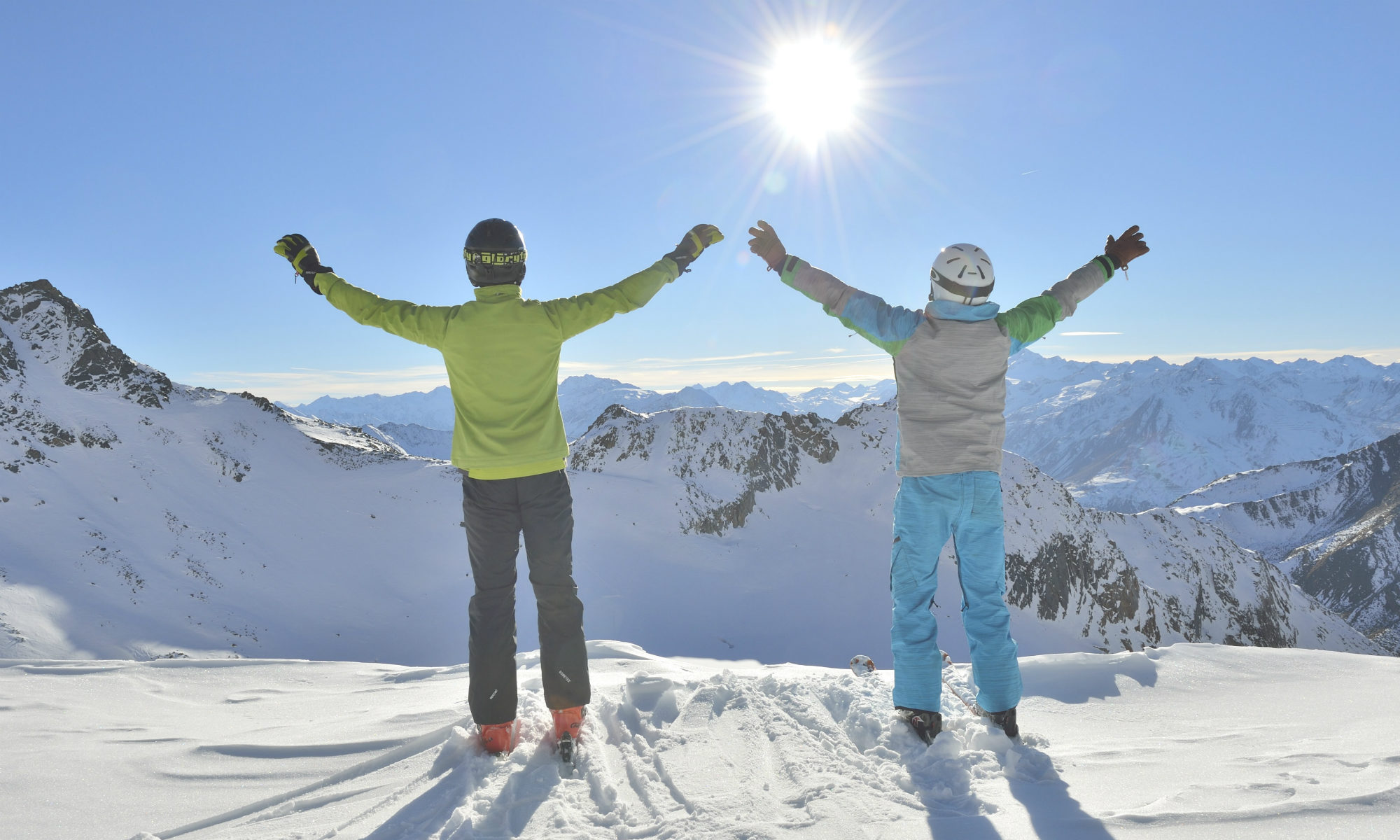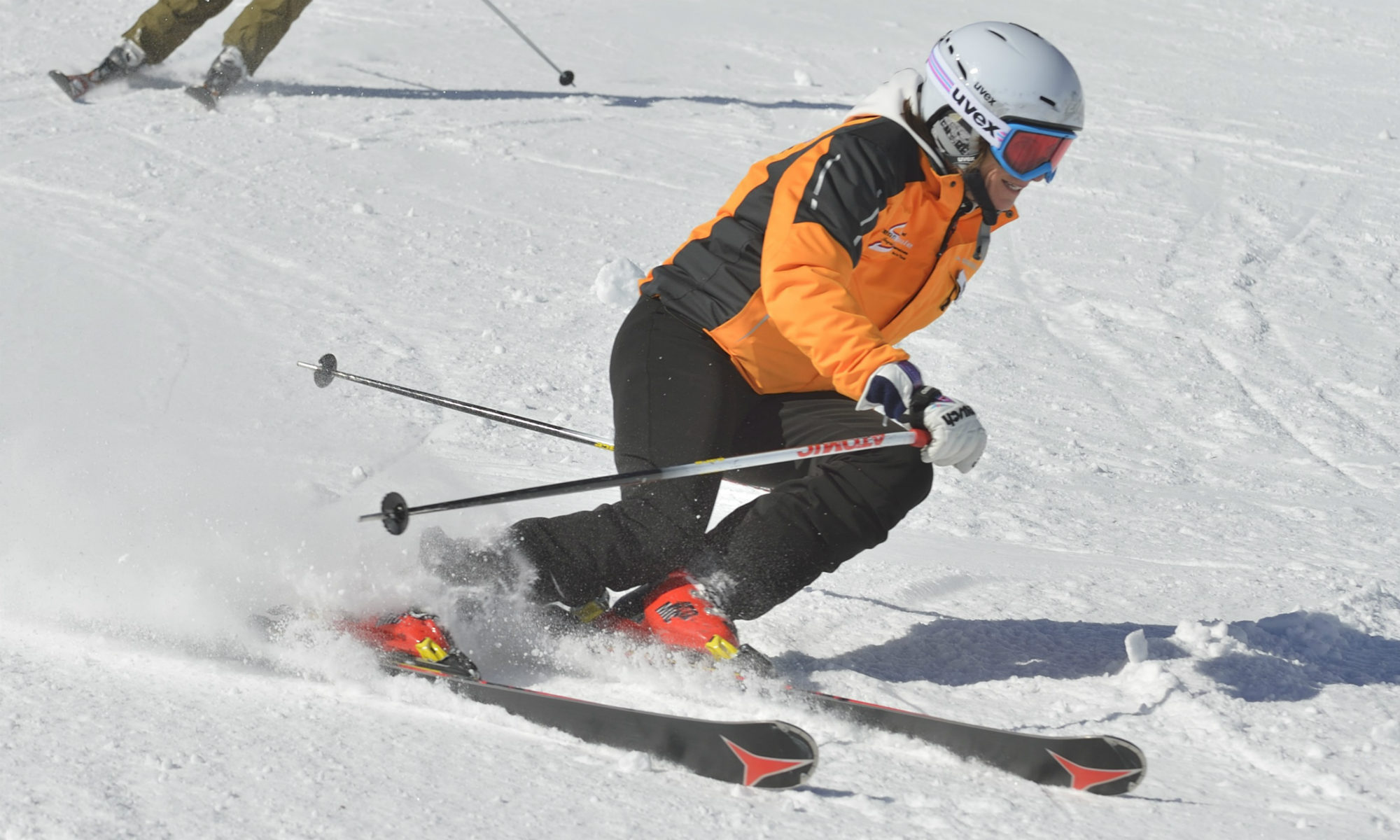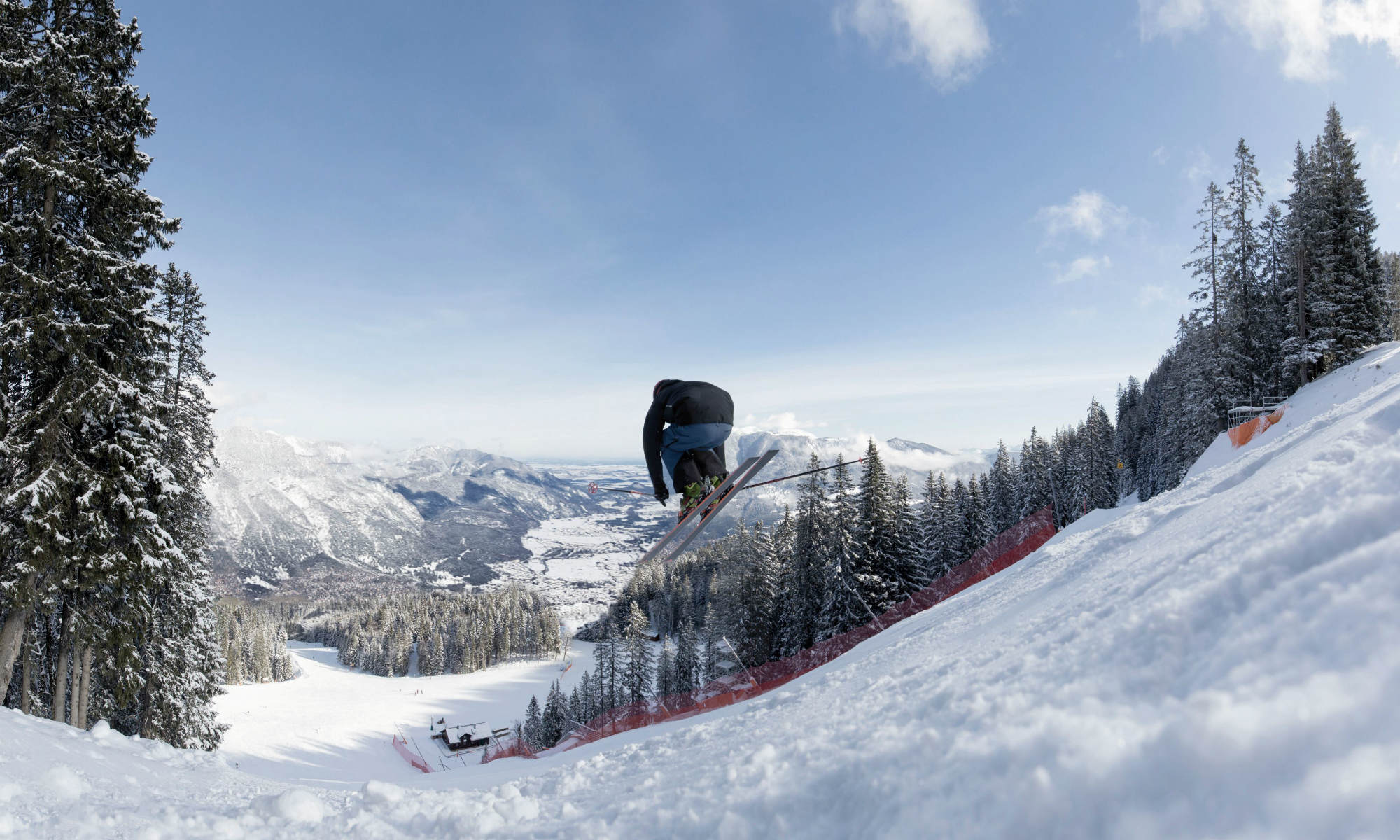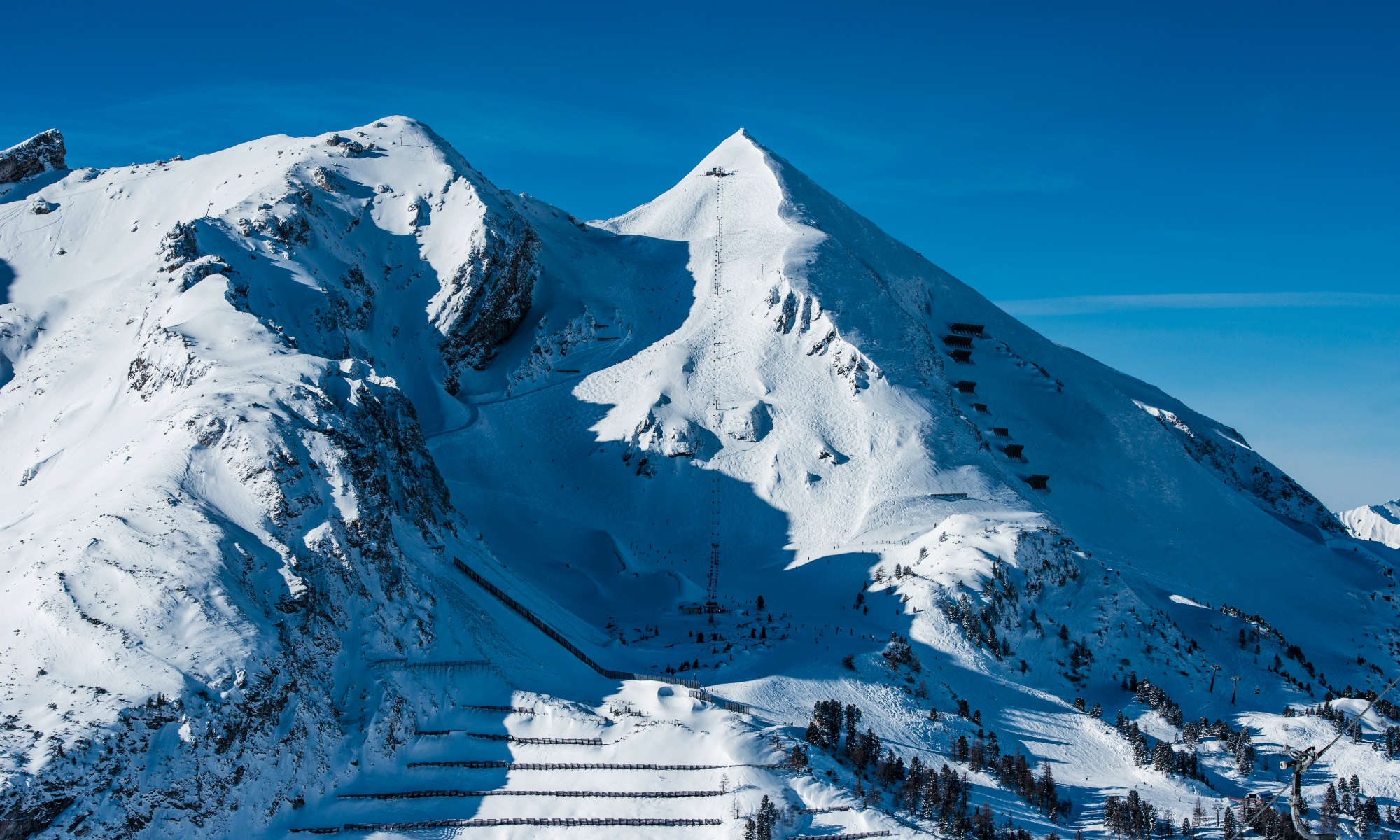Whether Streif, Kandahar or Harakiri – with the right skiing technique you can master even the world’s most difficult slopes. So-called “black runs” are the most demanding slopes in a skiing region. They have a gradient of more than 40% (22°) and are a challenge for even the most experienced skiers. Not only technically very difficult to ski down, these slopes are often extremely steep and icy, and demand a highly refined technique plus a high level of concentration from the skier.
The biggest challenge of black runs lies in regulating speed so as to maintain control of the skis. The checkyeti expert team reveals the right technique and gives you helpful tips and tricks on how you can master black runs like a professional.
Preparation and evaluating personal capability

Anyone who plans to conquer black runs on their next skiing holiday should be well-informed beforehand about the skiing resort, its slope markings (blue, red and black) and the genuine level of difficulty. For those who are not entirely sure about their own proficiency, many resorts have websites offering a digital “bird’s eye view” perspective of the slopes, which many skiers find helpful.
It is important for skiers to correctly evaluate their own capabilities. This reduces the chance of accidents or injuries and helps avoid the frustration that can arise after skiing a slope that was too difficult.
Advanced skiers should also trust their basic instincts and only attempt a black run when the feeling is right. Although the necessary respect for speed and the slope is essential on these slopes, fear has no place; with the right degree of calm and concentration, any black run can be mastered.
Basic fitness as a prerequisite for a successful descent

Skiing black runs requires a certain level of basic fitness alongside the right technique. As with other intense sports, skiing demands a lot from the body. Coordination, stamina, stability and strengthened muscles are prerequisites, and comprehensive preparation beforehand is a must for those planning on spending their winter on the slopes.
When short turn skiing and edging on icy slopes, the leg, core and arm muscles take most of the strain. Ideally, specific training for these muscle groups should begin a few months before the season starts. The complete musculoskeletal system has to be well-prepared, so as to be adaptable to the changing demands and challenges on the slope. Yoga and Pilates exercises are particularly helpful, as is classical stretching before and after sport.
The best technique for controlling speed
Keeping a cool head and regulating your speed whilst on a black run requires an advanced technique. Whilst having the same basis as on flatter slopes, this technique needs to be applied more carefully on high gradient slopes.
The trick to mastering the black run is having a polished short turns technique. This is important for keeping the skis under control on steep, icy slopes. It also enables a relaxed descent where speed doesn’t take the upper hand. The short turn enables the skier to flexibly adapt the curve radius to the current terrain conditions. Leading the skis as rapidly as possible over the fall line significantly reduces the speed increase within the curve and so the pace can be better regulated. A weighted outer ski and fast short turns within the curve are vital in counteracting the strong downhill force on steep slopes. Simple exercises can notably improve your short turns technique .
In addition to the increased weighting on the outer ski and a rapid lead over the fall line, it is important to briefly unweight the skis. The toes initiate a pressure build-up in the curve change, which relieves the pressure on the skis and they steer into the fall line. This helps the skier to turn more easily. However, the unweighting moment should be kept to a minimum.
checkyeti Tip: Even if your legs take the most strain during short turns, a stable torso will prevent speeding and prevent uncontrolled slipping in the curves. Including a short core muscle workout into your pre skiing fitness programme will help train your upper body for black runs. Ideal exercises are planks, or reverse push-ups.
Strong edging makes for easier steering

Icy patches on the slope can often be found on black runs. These should be skied with a cool head. Focused concentration and strong edging help you maintain control. It’s important to stay calm, ignore the noises of the skis on the ice and to build up the pace with caution, as reducing speed on a steep slope can be very challenging.
What is the best way to create a higher edge angle? Firstly the pressure on your outer ski is built up through a balancing movement from the upper body (direction valley). Simultaneously, the ankles, knees and hips should lean towards the slope. Use leg pressure to build up the tension on the skis and achieve minimal surface contact. As the force is concentrated on a relatively narrow area, the edges grip the slope more effectively and skiing icy areas becomes a great deal easier.
It takes a good deal of courage to master the demands of an icy slope. After the curve, the edging angle should be increased and the outer ski edge should bear the main load. This hinders side-slipping and the skis can be lead more easily.
checkyeti Tip: Position your skis wider apart if you have the feeling that you’re losing your balance on steep slopes and want to improve your stability. Wider positioning expands the surface area, resulting in improved stability. Well-considered pole use can also help you keep your balance.
The right skiing equipment for black runs
In general, specific skis are not required for black runs. However, there are several other points that have to be considered when choosing the right equipment.
No matter which type of skiing equipment you use, the joker card of black runs is sharpened edges. Sharp edges grip on icy, steep slopes, ensuring a secure hold and making for a better all-round skiing experience. For this reason, it is recommended that you have your skis regularly and professionally serviced.
Alongside tuned edges, the length of the skis also influences technique on black runs. Skis that are too long hinder turns on steep slopes as they demand more power to turn. On particularly short skis, the contact area is too small. Skis with so-called tip- or tip-tail-rockers curve upwards at both ends and ease the skiing of black runs, as the shorter contact area makes them easier to turn.
checkyeti Tip: Those looking for professionally-serviced skis with perfectly sharpened edges for their adventures on the black runs should hire out skis locally. When booking advanced ski courses with a focus on technique exercises, equipment hire can often be simply added to the booking.
The top 5 black runs in the Alps
The Alps offer much more than just exceptional mountain panoramas as several of the world’s most adventurous runs are found in the heart of Europe. “Deep black” runs such as the Harakiri, the Streif or the Kandahar belong to the prestigious FIS World Cup runs and guarantee a racing pulse for both the skier and the viewers.
Black run skiing courses are led by experienced professionals and focus on specified race training and technique. These courses provide optimal preparation for mastering controlled skiing on high gradient slopes.
The Harakiri run in Mayrhofen

The Harakiri run in Zillertal, Tirol is the steepest ski run in Austria. The 376m descent starts from a height of 1500m and its gradient is higher than that of a ski jump. Therefore it isn’t such a surprise that the name stems from an old and deadly Japanese Samurai ritual.
checkyeti Tip: This run with its Japanese name is best conquered with the help of local ski guide, who knows the Harakiri like the back of his hand.
Information about ski lessons for advanced skiers in Mayrhofen >
The Streif in Kitzbühel
The Streif in Kitzbühel is definitely one of the world’s most legendary ski runs. The venue for the yearly Hahnenkamm Ski Race presents a very special challenge, even for the professionals. The former Austrian ski racer and alpine sports icon Franz Klammer won the championship title 4 times in his career.
checkyeti Tip: An advanced skiing course on the Streif is the first step for any adventurous skier who wants to follow in the footsteps of famous ski stars such as Franz Klammer.
Details about ski lessons in Kitzbühel >
The Kandahar in Garmisch-Classic

This run holds several records: A gradient of 92% (c.a. 42°) on a maximum height of 3300m. Professional skiers race down this 3,3km long run with speeds of up to 130km/h and master an elevation difference of 720m.
checkyeti Tip: Those who would rather leave out particularly steep stretches such as the “Free Fall” will find a solution on the Kandahar-Express. A trained ski instructor can help you work on and improve your technique, so that even the Kandahar can be skied down without too much effort.
Learn more about the ski lessons in Garmisch-Classic >
The Gamsleiten 2 run in Obertauern

With gradients of 100% (45°) on the steepest parts of this run, even adrenaline junkies will have their full hit. Additionally, the Gamsleiten 2 is one of the steepest mogul slopes in the whole of Europe.
checkyeti Tip: Mental training is just the thing to best prepare yourself not only physically but also mentally for black runs such as the Gamsleiten 2, Experienced skiing instructors work with you on improving mental balance and concentration, both of which can be vital when skiing steep slopes.
Ski lessons and coaching in Obertauern >
The Lange Zug in Lech
The Lange Zug at Rüfikopf in Lech is not for the faint-hearted. This ski run is one of the world’s steepest and should only be attempted by true professionals, or in the company of a local ski guide who can accurately evaluate the snow and weather conditions.
Find out more about ski lessons with experienced local instructors in Lech >
I have always loved snow but winter in England was usually more grey than white. Now living in Austria, my kids have inherited my passion for skiing and we make most of every winter, getting out in the snow whenever we can!
